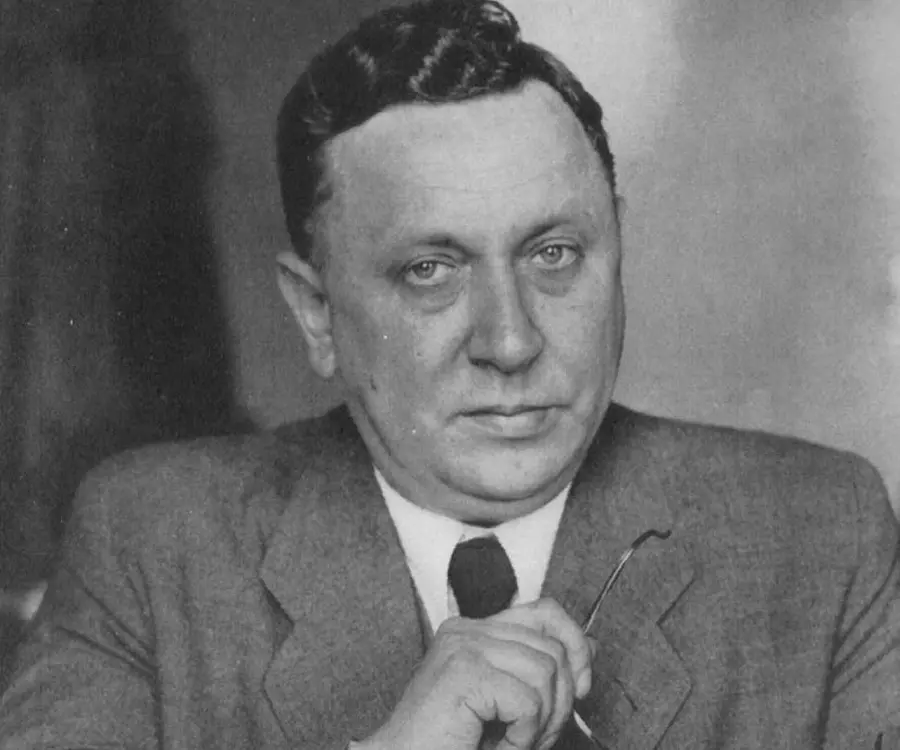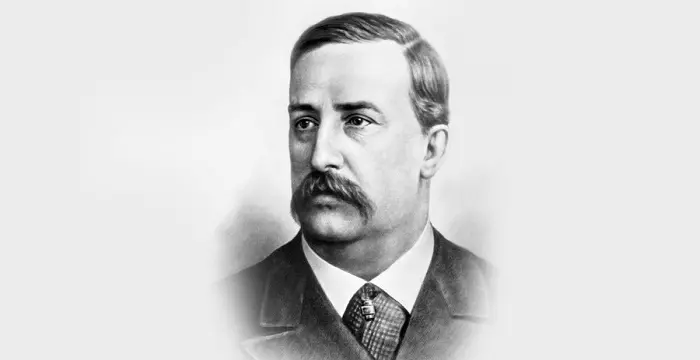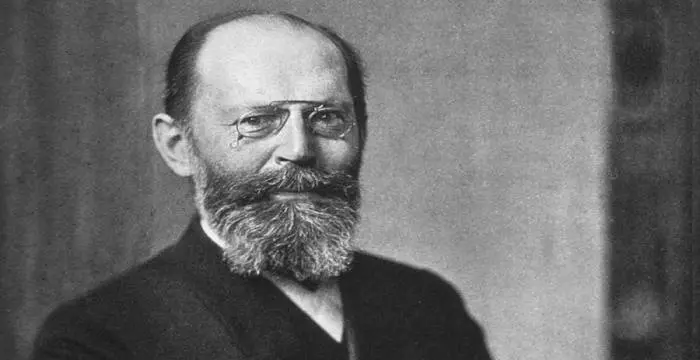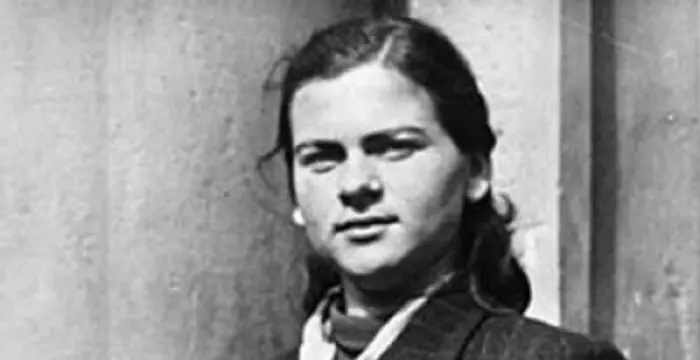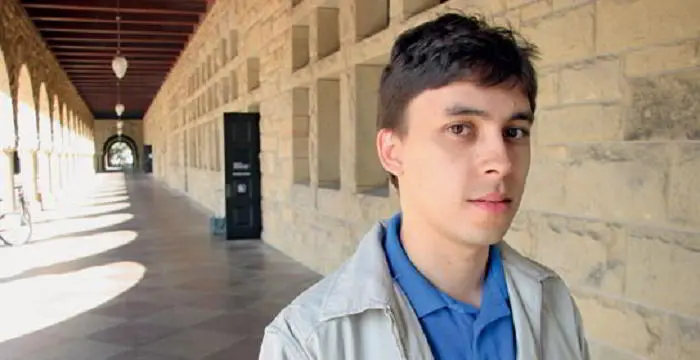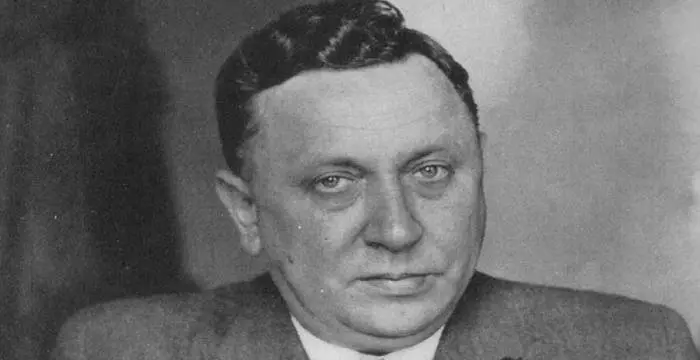
Kurt Alder - Chemists, Career and Childhood
Kurt Alder's Personal Details
Kurt Alder was a German chemist who received the Nobel Prize in chemistry in 1950
| Information | Detail |
|---|---|
| Birthday | July 10, 1902 |
| Died on | June 20, 1958 |
| Nationality | German |
| Famous | Scientists, Chemists, Organic Chemists |
| Spouses | Christiane Tocco, Irene Hawthorne |
| Universities |
|
| Birth Place | Königshütte (Chorzów), Silesia |
| Gender | Male |
| Father | Joseph Alder |
| Sun Sign | Cancer |
| Born in | Königshütte (Chorzów), Silesia |
| Famous as | Chemist |
| Died at Age | 55 |
// Famous Scientists
Juliane Koepcke
Juliane Koepcke is a German-Peruvian biologist, who was the lone survivor among the 92 passengers and crew of the ill-fated LANSA Flight 508 that crashed in the Peruvian rainforest on 24 December 1971. Know more about her life in this biography.
Henry Cavendish
Henry Cavendish was a theoretical chemist and physicist, renowned for discovery of hydrogen and calculation of the mass of earth. To know more about his childhood, profile, timeline and career read on
Konstantin Tsiolkovsky
Konstantin Tsiolkovsky was a Russian rocket scientist and a pioneer of astronautics. This biography provides detailed information about his childhood, family, personal life, career, achievements, etc.
Kurt Alder's photo
Who is Kurt Alder?
Kurt Alder was a German chemist who received the Nobel Prize in chemistry in 1950 for developing a process for producing synthetic organic compounds. This process is known as the ‘Diels-Alder reaction’ or the ‘diene synthesis’ process. He shared the prize with another German chemist, Otto Diels, who was his guide while performing the experiment at the University of Kiel. The process paved the way for the creation of artificial rubber, alkaloids, plastics, dyes, drugs, drying oils, lubricating oils, and other organic compounds which were not available before. The main characteristic of this process was that it neither required catalysts or reagents nor was there any necessity for the application of high temperatures or pressures to reach the objective. The cost of the production of the artificial organic compounds was very low. Though many other scientists had claimed about this phenomenon earlier, it was Alder and Diels who were able provide the first experimental proof of the reaction and its application in producing a wide range of synthetic compounds such as cortisone, morphine and reserpine. Even steroids, polymers and alkaloids could be synthesized with this process along with insecticides like dieldrin and aldrin. He wrote many papers on how totally new compounds could be derived from existing compounds.
// Famous Chemists
Henry Cavendish
Henry Cavendish was a theoretical chemist and physicist, renowned for discovery of hydrogen and calculation of the mass of earth. To know more about his childhood, profile, timeline and career read on
Walter Kohn
Nobel Laureate Walter Kohn was an Austrian-born American theoretical chemist and physicist. Check out this biography to know about his childhood, life, achievements, works & timeline.
Jabir Ibn Hayyan
Jabir Ibn Hayyan was a medieval era polymath. Check out this biography to know about his life, works and achievements.
Childhood & Early Life
Kurt Alder was born on July 10, 1902 in Konigshutte, Upper Silesia in Prussia which is now known as Chorzow and is situated in Poland. His father, Joseph Alder, taught at a school in Kattowitz. Kurt spent his childhood in the industrial environment of Konigshutte.
His early education was completed in the German schools in Konigshutte.
His family moved to Germany after the end of the First World War to retain their German citizenship when the area the family lived in became a part of Poland.
After completing Oberrealschule in Berlin he studied chemistry at the University of Berlin from 1922 to 1923 and later at the University of Kiel.
In 1926 he received his doctorate from the University of Kiel.
Career
Kurt Alder started working as a research scholar in Otto Diels laboratory in the University of Kiel after receiving his doctorate.
In 1928 while working with Diels on the structure of organic compounds he discovered a process by which a simple ‘diene’ compound such as ‘butadiene’ could be transformed into a complex compound. This process is known as the ‘Diels-alder reaction’ and was the precursor for the production of synthetic plastic, rubber, alkaloids, insecticides and many other artificial organic compounds.
During this time he worked with a number of younger colleagues at the laboratory on experiments that dealt with stereochemical reactions particularly in the case of unsaturated systems. He also experimented with the behavior of double bonds in carbon rings and the ways in which intermolecular arrangements were formed.
He was appointed a Reader in the department of Organic Chemistry at the University of Kiel in 1930 and was made professor in 1934. He held this post until 1936.
In 1936 he was made a research director at a branch of the largest chemical company, I. G. Farbenindustrie in Leverkusen called Bayer Werker. Here he applied his theory to the development of plastics and also developed methods in which synthetic rubber known as ‘Buna’ could be produced.
He became a member of the ‘Kaiserlich Leopold Karol Deutsche Akademie der Naturforscher’ or the ‘Imperial Leopold Karol Academy of Natural Philosophers’ situated in Halle in 1938.
During his work with I. G. Farbenidustrie, his old urge to carry on more research was rekindled and he returned to the academic field in 1940. He joined the Chemical Institute at the ‘University of Cologne’ as director and professor in the department of ‘Experimental Chemistry and Chemical Technology’. He remained in this post till his death in 1958.
Although the work environment in Cologne was not conducive for scientific research during this period, Alder continued with his research on organic compounds. These experiments ranged from the simple additive processes like the ‘diene synthesis’ process to more complex processes of substitution. His work also included experiments on the ways in which molecular oxygen reacted with unsaturated compounds.
In 1943 he discovered the ‘ene reaction’ which was very similar to the process of ‘diene synthesis’. This process has also been used widely in the field of chemical synthesis.
During 1949-1950 he was appointed Dean of the Faculty of Philosophy.
He was affiliated to the University of Cologne when he received the Nobel Prize in 1950.
Major Works
The doctoral thesis of Kurt Alder was ‘Uber die Ursachen der Azoester-reaktion’ or ‘On the causes of The Azoester Reaction’.
Most of the papers on the experiments conducted by him were reported in scientific journals such as ‘Angewandte Chemie’, ‘Berichte der Deutschen Chemisen Gesellschaft’ and ‘Justus Liebig’s Annalen der Chemie’.
Awards & Achievements
In 1938 Kurt Alder was awarded the Emil Fischer Memorial Medal by the association of German Chemists.
He received the Nobel Prize for chemistry jointly with Otto Diels in 1950 for the ‘Diels-Alder reaction’.
He also received an honorary M.D. degree from the University of Cologne in 1950.
In 1954 he was awarded an honorary doctorate by the University of Salamanca.
Personal Life & Legacy
He married Irene Hawthorne, who had been a prima ballerina, on March 10, 1948.
He later got married to Christiane Tocco on September 16, 1965.
Kurt Alder died in Cologne, West Germany on June 20, 1958.
Humanitarian Work
He was committed to world peace and joined a group of seventeen other Nobel laureates in 1951 in issuing an appeal to all nations asking them to refrain from going to war against other nations.
Trivia
Kurt Alder lost both his parents during the Second World War as they were captured by the Gestapo because they were Jews.
// Famous Organic Chemists
Dmitri Mendeleev
Dmitri Mendeleev was a Russian chemist who is best known for his discovery of the periodic law. Check out this biography to know about his childhood, life, achievements, works & timeline
Aleksandr Borodin
Aleksandr Borodin was a prodigal Russian music composer and scientist. This biography gives detailed information about his childhood, life, works, achievements and timeline.
Hermann Emil Fischer
Emil Fischer was a Nobel Prize winning chemist from Germany who is known for inventing the ‘Fischer Projection’ method. To know more about his childhood, career, profile and timeline read on
Kurt Alder biography timelines
- // 10th Jul 1902Kurt Alder was born on July 10, 1902 in Konigshutte, Upper Silesia in Prussia which is now known as Chorzow and is situated in Poland. His father, Joseph Alder, taught at a school in Kattowitz. Kurt spent his childhood in the industrial environment of Konigshutte.
- // 1922 To 1923After completing Oberrealschule in Berlin he studied chemistry at the University of Berlin from 1922 to 1923 and later at the University of Kiel.
- // 1926In 1926 he received his doctorate from the University of Kiel.
- // 1928In 1928 while working with Diels on the structure of organic compounds he discovered a process by which a simple ‘diene’ compound such as ‘butadiene’ could be transformed into a complex compound. This process is known as the ‘Diels-alder reaction’ and was the precursor for the production of synthetic plastic, rubber, alkaloids, insecticides and many other artificial organic compounds.
- // 1936In 1936 he was made a research director at a branch of the largest chemical company, I. G. Farbenindustrie in Leverkusen called Bayer Werker. Here he applied his theory to the development of plastics and also developed methods in which synthetic rubber known as ‘Buna’ could be produced.
- // 1938He became a member of the ‘Kaiserlich Leopold Karol Deutsche Akademie der Naturforscher’ or the ‘Imperial Leopold Karol Academy of Natural Philosophers’ situated in Halle in 1938.
- // 1938In 1938 Kurt Alder was awarded the Emil Fischer Memorial Medal by the association of German Chemists.
- // 1940 To 1958During his work with I. G. Farbenidustrie, his old urge to carry on more research was rekindled and he returned to the academic field in 1940. He joined the Chemical Institute at the ‘University of Cologne’ as director and professor in the department of ‘Experimental Chemistry and Chemical Technology’. He remained in this post till his death in 1958.
- // 1943In 1943 he discovered the ‘ene reaction’ which was very similar to the process of ‘diene synthesis’. This process has also been used widely in the field of chemical synthesis.
- // 10th Mar 1948He married Irene Hawthorne, who had been a prima ballerina, on March 10, 1948.
- // 1949 To 1950During 1949-1950 he was appointed Dean of the Faculty of Philosophy.
- // 1950He was affiliated to the University of Cologne when he received the Nobel Prize in 1950.
- // 1950He received the Nobel Prize for chemistry jointly with Otto Diels in 1950 for the ‘Diels-Alder reaction’.
- // 1950He also received an honorary M.D. degree from the University of Cologne in 1950.
- // 1951He was committed to world peace and joined a group of seventeen other Nobel laureates in 1951 in issuing an appeal to all nations asking them to refrain from going to war against other nations.
- // 1954In 1954 he was awarded an honorary doctorate by the University of Salamanca.
- // 20th Jun 1958Kurt Alder died in Cologne, West Germany on June 20, 1958.
- // 16th Sep 1965He later got married to Christiane Tocco on September 16, 1965.
// Famous German peoples
Jordan Carver
Jordan Carver is a famous German model. Let’s take a close look at her personal life, including her age, career, net worth, achievements and some fun facts.
Jürgen Klopp
Jürgen Klopp is a German football manager, and a former professional football player. Check out this biography to know more about his childhood, family, personal life, etc.
Irma Grese
Irma Grese was a notorious German Nazi concentration camp guard during the Second World War. This biography profiles her childhood, life, horrifying acts, death and other facts.
Juliane Koepcke
Juliane Koepcke is a German-Peruvian biologist, who was the lone survivor among the 92 passengers and crew of the ill-fated LANSA Flight 508 that crashed in the Peruvian rainforest on 24 December 1971. Know more about her life in this biography.
Jawed Karim
Jawed Karim is a German-American internet entrepreneur, technologist and co-founder of the video-sharing website, YouTube. Check out this biography to know about his childhood, family, personal life, achievements, age, etc.
Charles Bukowski
Charles Bukowski was a German-born American novelist, short story writer and poet. With this biography, learn in details about his childhood, life, works, career and timeline
Kurt Alder's FAQ
What is Kurt Alder birthday?
Kurt Alder was born at 1902-07-10
When was Kurt Alder died?
Kurt Alder was died at 1958-06-20
Where was Kurt Alder died?
Kurt Alder was died in Cologne
Which age was Kurt Alder died?
Kurt Alder was died at age 55
Where is Kurt Alder's birth place?
Kurt Alder was born in Königshütte (Chorzów), Silesia
What is Kurt Alder nationalities?
Kurt Alder's nationalities is German
Who is Kurt Alder spouses?
Kurt Alder's spouses is Christiane Tocco, Irene Hawthorne
What was Kurt Alder universities?
Kurt Alder studied at University of Kiel, Humboldt University of Berlin
Who is Kurt Alder's father?
Kurt Alder's father is Joseph Alder
What is Kurt Alder's sun sign?
Kurt Alder is Cancer
How famous is Kurt Alder?
Kurt Alder is famouse as Chemist



